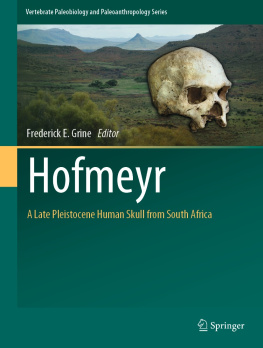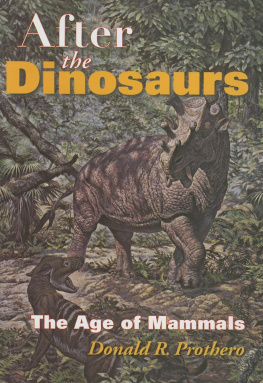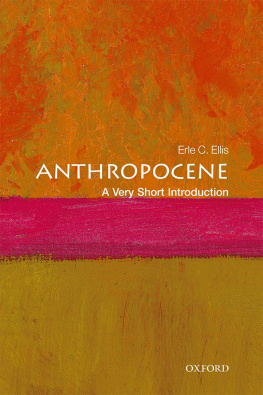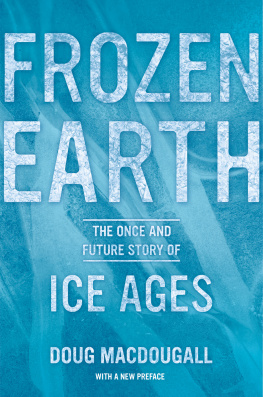PENGUIN BOOKS
An imprint of Penguin Random House LLC
375 Hudson Street
New York, New York 10014
penguin.com
First published in the United States of America by Viking Penguin, a member of Penguin Group (USA) Inc. 2012
Published in Penguin Books 2013
Copyright Lydia V. Pyne and Stephen J. Pyne, 2012
Penguin supports copyright. Copyright fuels creativity, encourages diverse voices, promotes free speech, and creates a vibrant culture. Thank you for buying an authorized edition of this book and for complying with copyright laws by not reproducing, scanning, or distributing any part of it in any form without permission. You are supporting writers and allowing Penguin to continue to publish books for every reader.
eBook ISBN: 9781101583685
THE LIBRARY OF CONGRESS HAS CAT ALOGED THE HARDCOVER EDITION AS FOLLOWS:
Pyne, Lydia V.
The last lost world : ice ages, human origins, and the invention of the Pleistocene / Lydia V. Pyne and Stephen J. Pyne.
p. cm.
Includes bibliographical references.
ISBN: 9781101583685 (hc.)
ISBN: 9781101583685 (pbk.)
1. Geology, StratigraphicPleistocene. 2. PaleogeographyPleistocene.
I. Pyne, Stephen J., 1949 II. Title.
QE697.P96 2012
551.792dc23 2011038464
Cover design: Evan Gaffney Design
Cover photograph: Ralph Lee Hopkins/National Geographic Stock
Version_2
For Stan
LVP
For Sonja, both past and future, as always
SJP
What a piece of work is a man, how noble in reason, how infinite in faculties, in form and moving how express and admirable, in action how like an angel, in apprehension how like a god: the beauty of the world, the paragon of animals! And yet to me what is this quintessence of dust?
William Shakespeare, Hamlet, Act 2, Scene 2
I dont want to belong to any club that will accept me as a member.
Groucho Marx
Table of Figures
. Earth as ice planet. The geography of ice, frost, and sand at the last glacial maximum, ca. 20,000 years ago.
. Chronicle of hominins. Estimated life spans through the Pleistocene and Plio-Pleistocene.
. Out of Africa: a geography of erectines, Neanderthals, and floresientines.
. Unsettled epoch: the Pleistocene finds its place in the geological time scale.
. Icon of evolution: Haeckels Tree of Life.
Prologue
Mossel Bay, South Africa
I PUT MY CHOPSTICKS and tweezers down and looked out of the caves entrance. I saw the sun glinting off the oceans surface and dolphins cutting through the water as they splashed around offshore. After six weeks in this cave, tucked off the coast of Mossel Bay, I was so accustomed to the pounding surf against the rocks that the roar outside of the cave proper seemed downright insignificant. Although coastal South Africa was one of the more idyllically situated field projects I had worked on during grad school, my mind wasnt on the shrubby fynbos outside the caves entrance. My attention was very narrowly focused on the square of sediment I had been tweezering away at for weeks. I turned back to the stratigraphic lens and repositioned the chopsticks to get a better angle to continue paring away the sediment.
It took my eyes a few minutes to refocus from the bright light outside to the soft glow of the fluorescent bulb hanging above me. The cave was deep enough in the coastal bedrock that sunlight barely illuminated the entrance. Those of us in the back of the cave were excavating our precisely measured units courtesy of artificial lights strung along the walls. Several lights were in fixed positions shining on the sides of the squares vertical stratigraphic profiles, and a couple of bulbs hung freely on wires so excavators could more closely examine artifacts and changes in soil color.
As a grad student, my job was to excavate, bag artifacts, and keep careful records from the field seasonevery bone, stone, and stratum was documented, photographed, and filed away for future analysis. Ultimately, we wanted to be able to explain the cave as a whole, its artifacts, and its setting within the context of the Pleistocene of South Africa. Our inquiry into the broader natural history of South Africa was nothing new. Since the 1770s, coastal South Africa has had intellectual appeal as a place for researchers to come and collect plants, animals, and artifacts and to take these collections back to various museums and universities for study. Carl Linnaeuss students Carl Peter Thunberg and Anders Sparrman were quick to publish their findings about the biodiversity of the South African fynbos and early twentieth-century archaeologists were intrigued with the cave sites and shell middens found along the coast. Each set of researchers in South Africa has tried to understand South Africas natural history by working out how their research fits into a broader intellectual schema.
In our field season, we were no different. We were rehearsing, like our intellectual predecessors in natural history, a constant dialectican intellectual tension, if you willtrying to balance making sense of a holistic system by understanding its parts. To be able to do this, we needed to take the cave apart according to its different inorganic stratigraphic pieces and see what parts the cave was made up ofsoils, artifacts, and their positions relative to each other. The parallel between us and our intellectual history was practically complete if you could swap out a quaint cabinet of curiosities for the hundreds of sandbags protecting the caves surface from trampling feet, the soil samples piling up along the walls, and the days artifacts bagged, tagged, cataloged, and carefully placed in plastic bins to be stored at the local museum.
However, I came to my interest in the Pleistocene and archaeology from a very nontraditional path. With a background in history, my sense for explanation focused heavily on narrativewhat story or stories exist, how they are told, and what constitutes a reasonable telling. The original draw to archaeology had been the appeal of hands-on history. However, archaeology and, indeed, many other sciences that are Pleistocene-focused work to make sense of the Pleistocene through reductionism: by taking the complex phenomenon of human history and analyzing of it through its smallest components, whether those parts are isotopes or artifacts. Theres a certain necessity in this approach to the Pleistoceneand even a certain parsimonyfrom the perspective of a researcher, but it leaves little room for broader themes or complex explanations. From my perspective as someone also trained in the humanities, the Pleistocene I knew as a field archaeologist left little place for the questions, debates, and intellectual tensions that have piqued people for millennia and were the themes of other scholarship.
However, this begs the question of what a humanities-informed treatment of the Pleistocene might look like and what kind of scholarship might work to inform it. As a geologic epoch, the Pleistocene lasted from approximately 2.6 million to 10,000 to 12,000 years ago. It includes an ice age, a shakeout of seas and lands, Earths fifth great extinction event, and the appearance and evolution of the hominins. Its a world of mammoths and woolly rhinos, erectines and Neanderthals, ice sheets and warm spells; its a time of extinctions and origins.
However, the Pleistocene is also an idea. And as an idea, the Pleistocene appeared in the early nineteenth century, inseparable from other concepts and assumptions of those times. It then underwent intellectual upheavals and an evolution of its own, as profound as the inundations of ice and pluvials. From it emerged a new origins story, whose










